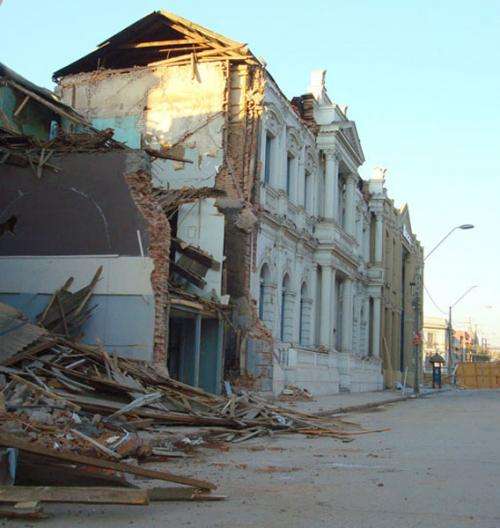The resilience of the Chilean coast after the earthquake of 2010

In February 2010, a violent earthquake struck Chile, causing a tsunami 10 m in height. Affecting millions of people, the earthquake and giant wave also transformed the appearance of the coastline: the dunes and sandbars were flattened, and the coast subsided in places by up to 1 m. But although the inhabitants are still affected for the long term, the shore system quickly rebuilt itself. A team from IRD and its Chilean partners showed that in less than a year, the sedimentary structures had reformed. The Chilean coast therefore represented a unique "natural laboratory" for studying coastal formation processes. The subsidence of the coast also revealed the effects of rising sea levels on shores.
In addition to the material and human damage, the consequences of the earthquake and tsunami on the coastline biology and appearance were very severe. For lack of previous observations, it was the first time that a scientific team, bringing together IRD researchers and their Chilean partners, have been able to describe the geomorphological impact of such a catastrophe.
The tsunami wiped the slate clean
Less than a week after the event, the international team had been formed and was making observations, at first on a spot basis, to evaluate the impact on 800 km of coast. The topographical and GPS surveys showed that the tsunami acted like a bulldozer, destroying existing structures: dunes, underwater sandbars, beaches, etc. This "reset" made the Chilean coast a unique case for the scientists to understand the formation of these geomorphological structures.
High resilience of the shore
A twice-monthly follow-up of the natural reconstruction of the coastline was then conducted by means of topographical surveys, satellite imaging and geo-referenced photos. They found that the shore had responded quickly to the disaster. After a few months, most of the sandy coastal structures had rebuilt themselves – but with a different morphology. Unexpectedly, within one year the sediment system had found a new equilibrium, different to that preceding the earthquake.
Global warming live
The earthquake lifted the offshore bar south of the epicentre, whereas for around 100 km to the north, it sunk by tens of centimetres to one metre. This subsidence reproduced within a few minutes the effects that the rise in sea level predicted over the coming decades would have. This makes the Chilean coastline a unique natural "laboratory" to better anticipate the impacts of global warming on coasts. Until now, models based their projections on a simple equation, known as the "Bruun equation". Thanks to their observations, the researchers have just shown that reality appears to be more complex than predicted.
In December 2012, a joint mission with the Chilean partners allowed a permanent observation system for continuously tracking the dynamic of the shore to be created. The recent creation of the Centro Nacional de Investigación para la Gestión Integrada de Desastres Naturales, responsible for this tracking, will make for improved risk management for the local fishing communities which, for their part, were affected for the long term by the catastrophe of 2010.
Did you know?
The redistribution of the land masses due to this earthquake slightly reduced the planet's moment of inertia, i.e. its resistance to rotation, thereby shortening the length of the day by 1.26 millionths of a second.
Worth knowing:
On 27 February 2010, a mega-earthquake of a magnitude of 8.8 off the coast of Chile and the tsunami 10 m high which followed, caused more than 600 victims, and affected millions of Chileans. Collapsed buildings and bridges, power and telephone lines cut… the losses were evaluated at more than 15 billion dollars.
It was one of the six most powerful earthquakes ever recorded on the planet. The Earth's crust broke over 500 km, along an ocean fault situated just 6 km off the Chilean coast.
More information: Villagran, M. et al. Tsunami du Chili 2010 : destruction du système littoral et retour vers un équilibre sédimentaire ?. Nantes : Paralia, 2012, p. 541-548. Journées Nationales Génie Côtier - Génie Civil, 12. 2012/06/12-14, Cherbourg. fdi:010056158
Fritz, H. et al. 2011. Runup variability of the 27 February 2010 Chile tsunami. Journal of Pure and Applied Geophysics. 1-22. DOI 10.1007/s00024-011-0283-5
Provided by Institut de Recherche pour le Developpement

















